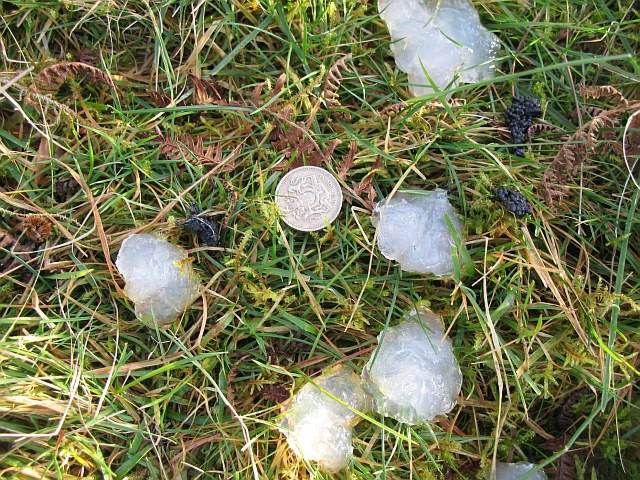Britain’s X-Files Reveal ‘Space Slime’ Is Still A ‘Genuine Mystery’

Britain’s "X-files" team, a group of experts from the Natural History Museum tasked with investigating bizarre phenomena, is stumped by a substance they call “space slime.”
According to The Daily Mail, the jelly-like material was discovered at the Ham Wall nature reserve in Somerset, a rural county in southwest England, in August, around the time a meteorite exploded in the sky above central Russia with a force greater than 30 Hiroshima nuclear bombs.
This coincidence led some to draw a connection between the slime and the meteor, saying the “star jelly,” a substance reputed in folklore to appear when meteors fall to Earth, was the genuine article (although we’re pretty sure that, like most things that happened in August, the slime probably had nothing to do with the meteor).
But that doesn’t keep the space conspiracy theorists from … well, conspiring.
Even if the meteor theory does sound cuckoo, it’s true that the task force at the museum can’t figure out what the heck the space slime really is.
“The slime is still a genuine mystery,” Chesca Rogers, who has been leading the investigation to identify the space slime, told The Telegraph. “There are stories in folklore that link it with meteor sightings. Some people think it might be unfertilized frog spawn, others think it is a fungus, or a slime mold or that it is plant-related.”
Formally known as the Angela Marmont Centre of the Biodiversity’s Identification and Advisory Service, the group probes any leads or submissions they receive from frightened, concerned or simply confused Brits regarding odd objects they encounter. When someone dropped by with a “dragon skull,” the group proved it to be the pelvic bones of a sea bird. Another member of the public brought in what he or she thought was a dinosaur skull, only to be told it was just a rock.
According to The Telegraph, the advisory service has a series of laboratories in a quiet corner of the Natural History Museum in London. The British X-files group receives around 10,000 submissions from the public every year.
Most of the artifacts in Britain’s X-files prove to be not as out-of-this-world as their discoverers first thought. But the space slime still has researchers at the museum scratching their heads.
After extracting some DNA from the jelly, the team tried to identify where it came from. They discovered traces of DNA from nematode worms, fungi and bacteria, but none that could have been the source of the gelatinous slime. The researchers believe these organisms were simply colonizing the host slime.
“None of the tests we have done so far have told us anything conclusive, but the samples we got were not in the best condition and highly contaminated,” Rogers said.
Some have hypothesized that the stuff is actually jelly from frog ovaries. The gel keeps frog spawn from being eaten by predators. Or, the space slime could be a kind of slime mold, an unusual group of organisms that at certain points in their life cycles spawn giant, jelly-like cells.
Let's hope they’ll have some answers soon regarding the mysterious space slime. Otherwise, we just might start buying into the meteor story.
© Copyright IBTimes 2024. All rights reserved.






















